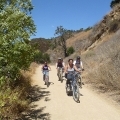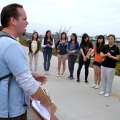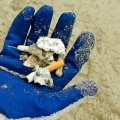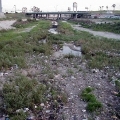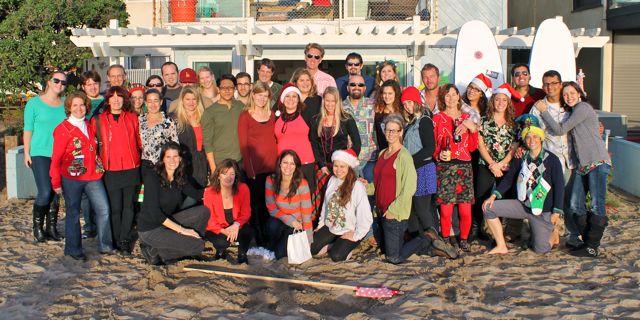Climate change is happening now. Here in Los Angeles- not just in the Arctic. In our backyards, our ocean, our mountains, our beaches. Of course it’s important to keep reducing carbon emissions, but at this point climate change is occurring – we don’t have a choice, we need adapt to the change. Investing time and resources into identifying and advocating for environmentally-sound adaptation solutions is imperative- climate change could be one of the biggest challenges we face.
Some of the ongoing and expected climate change impacts here in coastal Los Angeles include increased storm intensity, ocean temperature increases, changing currents, sea level rise, species range shifts, coastal erosion, and ocean acidification. To make matters worse, when a combination of impacts collide—such as high tides, sea level rise, storm surges, and inland flooding—projected inundation could severely impact our freshwater supplies, wastewater treatment plants, power plants, and other infrastructure… not to mention public health and the environment.
According to NOAA, in 2012 the U.S. experienced our warmest year on record, which might sound nice and toasty at first, but really means that we had more extremely hot days and heat waves than in years past. This type of climate change not only has immediate impacts to public health, but can also affect nature’s timing—prey, predators, and pollination may not match up as they have in past years—which can have profound effects on our local and migrating species, upsetting the natural balance native species have established for centuries.
At Heal the Bay, we’re committed to advocating for environmentally sound climate change adaptation methods through participating in local stakeholder groups such as Adapt-LA, analyzing and commenting on proposed plans and policies, and educating the public about the coastal threats associated with climate change and how everyday people can be involved in sound solutions that protect our critical natural resources.
Some areas we’ve been involved with for a while will help with climate change adaptation – like encouraging water reuse and conservation, or supporting and advocating for low-impact development. Also, by supporting the restoration and protection of specific ecosystems- such as wetlands and eelgrass beds- we are also not just adapting to climate change, but trying to offset it. Wetlands and eelgrass beds can act as a carbon sink, natural places that absorb more carbon from the atmosphere than they release.
One of Heal the Bay’s larger efforts over the past five years, and one of the key slices of my personal work at Heal the Bay is the establishment and implementation of Marine Protected Areas (MPAs), which help to maintain and create healthy ecosystems. How are MPAs and climate change related? Healthy ecosystems can better withstand the pressures of climate change much more effectively than a stressed ecosystem, and MPAs house more resilient habitats and species. By focusing on reducing overall stressors to the environment, such as pollution and overfishing, we can buy time for species to adapt to stressors that we cannot control- namely, climate change. A more resilient ecosystem can rebound and adapt after an extreme event. Also, by supporting a network of MPAs, rather than just single areas, we are planning ahead for species shifts to northern waters as ocean temperatures rise- our California MPA network provides a continuity of protected habitats.
I was encouraged to hear our President bring up climate change in his inauguration speech this month, and am ready to face the challenge and help implement solutions for our community, our environment, and for future generations- I hope you are on board too!
–Dana Roeber Murray, Marine & Coastal Scientist
You can get on board by joining the Forward on Climate rally in L.A. on February 17.
Or consider supporting Heal the Bay’s coastal resiliency efforts.



